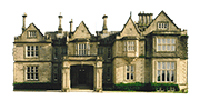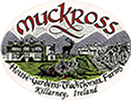The Kenmare Estate
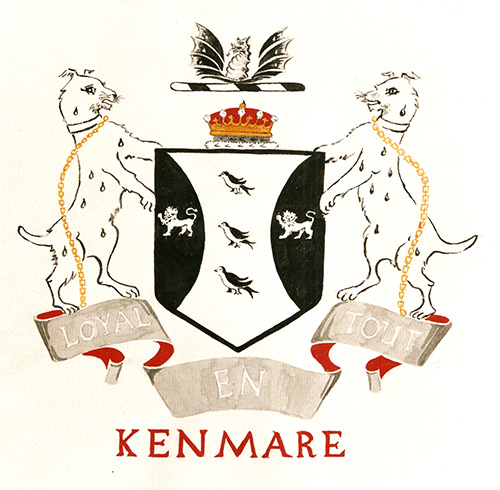
Coat of
Arms, Browne family, Earls of
Kenmare.
Loyal in Everything.
|
In the 1870s, the lands held in County
Kerry by the Browne family, Earls of
Kenmare, amounted to over 91,000 acres.
Their estate also included a further
22,000 acres in County Cork and over
4000 acres in County Limerick. In
total, the Kenmare Estate covered, at
that time, over 117,000 acres. The rent
ledgers that are available here relate
to the Kerry portion of the estate.
|
|
During the eighteenth and nineteenth
centuries, most people in Ireland lived
as tenants on small farms or holdings
that formed parts of large estates.
These estates were usually the property
of English or Anglo-Irish landlords,
who were typically separated from their
tenants by matters of religion, culture
and often language. Landlords usually
employed a land agent to manage and
administer their estates and to collect
their rents. The latter usually fell
due twice a year, on what were known as
'gale' days in May and November.
In the late 1870s, a deep economic
recession resulted in the Land War,
which erupted during the winter of
1878-1879. The Land War was a period of
agitation orchestrated by the Land
League, a mass movement that sought
rent reductions and an improvement in
tenants' rights. The British Government
introduced a series of Land Acts
between 1870 and 1909. These acts
eventually led to the widespread
transfer of landownership from
landlords to occupiers.
|
Earls of Kenmare
The Desmond Rebellion led by Gerald
Fitzgerald the Earl of Desmond, against
the English crown, came to an end in
November 1583. The Province of Munster
was devastated after four years of war
and many people died of famine. The
lands of the rebels were confiscated
and granted to 'undertakers' loyal to
the English crown. Sir Valentine Browne
was granted the lands of O'Donoghue Mór
of Ross, near Killarney. For almost 400
years the Browne family held these
lands.
|
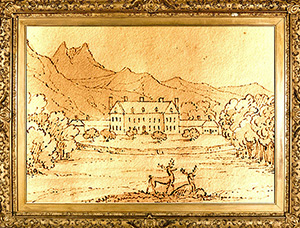
House constructed at Killarney by
Valentine 3rd Viscount Kenmare, c.
1725. In 1861 Queen Victoria spent the
night of Monday 26 August here, before
departing for the Herbert residence at
nearby Muckross.
The house was demolished during the
1870s.
|
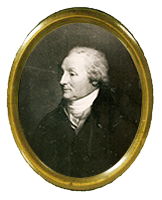
Valentine Browne
(1754-1812) created First Earl of
Kenmare 1801.
|
In the mid-1720s, one member of the
Browne family, Valentine 3rd Viscount
Kenmare (c. 1694/5-1735), built
a new house at Killarney. His son,
Thomas 4th Viscount Kenmare
(1721-1795), was largely responsible
for the development of the town. Aside
from promoting tourism, he encouraged
the building of roads and houses and he
attempted to establish a linen
industry. Thomas' son Valentine
(1754-1812) was granted an earldom in
1801 for supporting the Union with
Britain and he adopted the title Earl
of Kenmare. The secondary title of
'Castlerosse' was reserved for the
eldest Kenmare son during the tenure of
each earl.
|
The notorious
land agent Samuel (Sam) Hussey replaced the
more lenient Thomas Gallwey as land agent
to the Kenmare Estate in June 1874. Hussy
instigated quite modest rent increases
between 1875 and 1878. At the same time
however, the Fourth Earl of Kenmare
Valentine Augustus (1825-1905) was engaged
in building a new red-brick mansion
over-looking Killarney's Lough Leane (the
Lower Lake).
The Land War, which erupted during the late
1870s, saw widespread violence and
intimidation spread to the Kenmare Estate.
This in turn led to rent arrears almost
doubling between 1880 and 1882. The
reduction in revenue from rents, coupled
with the financial cost of the new mansion,
caused the Browne family severe financial
difficulties. As a result, by the end of
the nineteenth century, the Brownes had
started to sell off their once great estate
to their tenants.
|
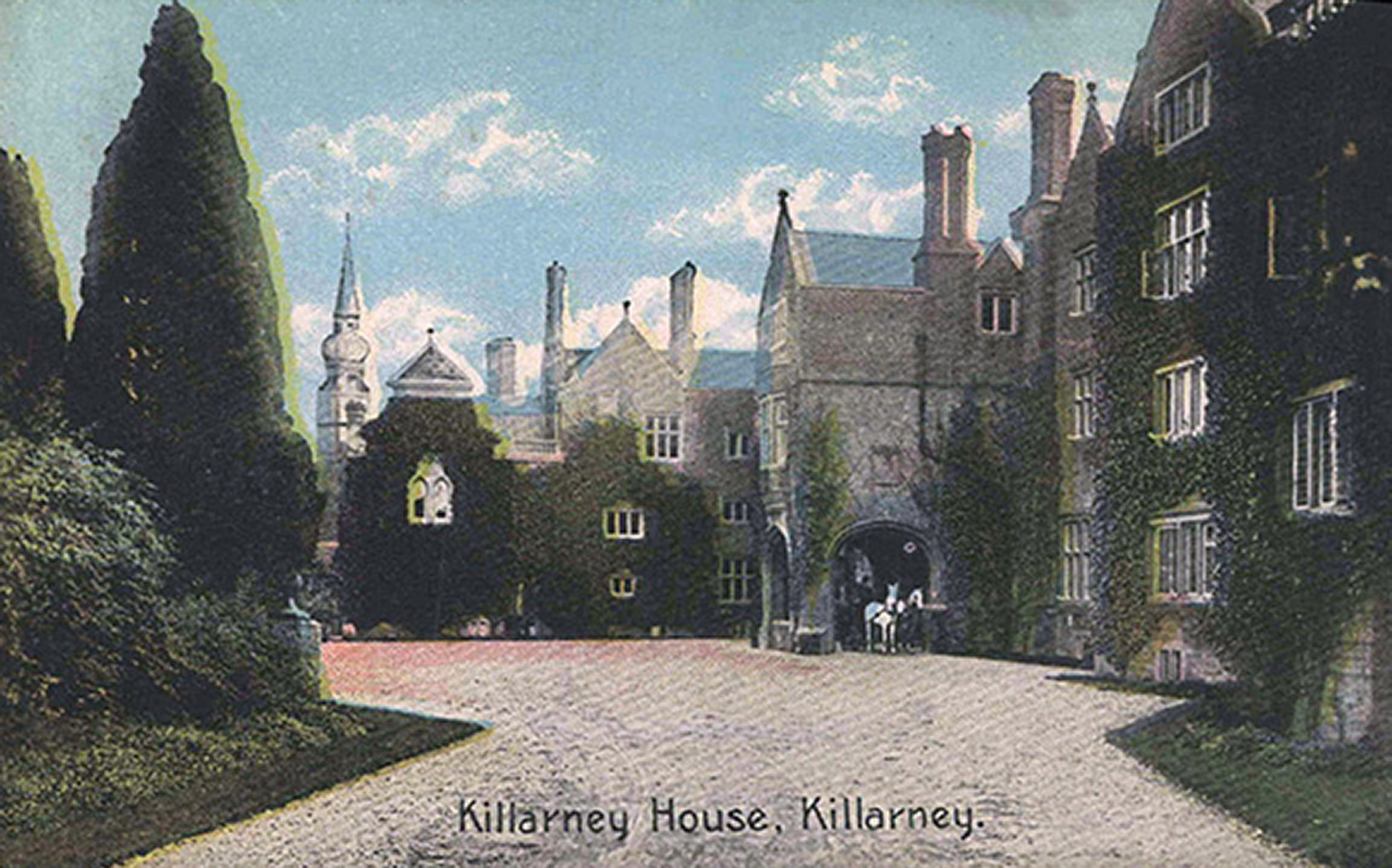
Built by the Valentine Augustus
4th Earl of Kenmare, Killarney House
was destroyed by fire early in
September 1913.
|
|
